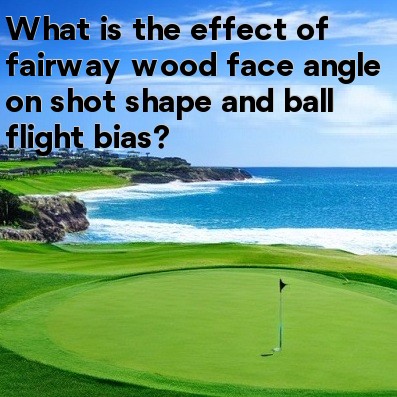
When it comes to golf, the fairway wood face angle plays a crucial role in determining the shot shape and ball flight bias. The face angle refers to the direction in which the clubface points in relation to the target line. It can have a significant impact on the outcome of your shot.
Effect on Shot Shape:
The face angle of a fairway wood directly affects the direction in which the ball will initially travel. When the face angle is square (pointing directly at the target), the ball will typically fly straight. However, when the face angle is open (pointing slightly to the right for a right-handed golfer), it tends to produce a fade or slice. Conversely, a closed face angle (pointing slightly to the left for a right-handed golfer) often results in a draw or hook. These shot shapes can be useful in certain situations or detrimental depending on the desired outcome.
Effect on Ball Flight Bias:
In addition to shot shape, the face angle of a fairway wood also influences the ball flight bias. The bias refers to the tendency of the ball to curve either left or right during its flight. An open face angle typically promotes a rightward bias (fade/slice), while a closed face angle encourages a leftward bias (draw/hook).
Adjusting the Face Angle:
Golfers have the ability to manipulate the face angle of their fairway wood to achieve different shot shapes and ball flight biases. One way to adjust the face angle is by physically rotating the clubface at address. For example, if you want to hit a fade, you can slightly open the face by rotating it to the right. On the other hand, if you prefer a draw, you can close the face by rotating it to the left.
Impact on Skill Level:
The effect of fairway wood face angle on shot shape and ball flight bias can vary depending on a golfer's skill level. Beginner golfers may struggle to consistently control the face angle and may unintentionally produce unwanted shot shapes or ball flight biases. As they develop their skills, they can gradually learn to manipulate the face angle to their advantage.
Conclusion:
Understanding the effect of fairway wood face angle on shot shape and ball flight bias is essential for golfers looking to improve their game. By experimenting with different face angles and understanding their impact, golfers can gain better control over their shots and increase their chances of success on the course.
In summary, the face angle of a fairway wood plays a vital role in determining shot shape and ball flight bias. The face angle directly influences the initial direction of the ball, with open face angles producing fades or slices, closed face angles resulting in draws or hooks, and a square face angle typically producing straight shots. Additionally, the face angle contributes to the ball's bias, with open angles favoring rightward biases and closed angles favoring leftward biases. Golfers can adjust the face angle to achieve different shot shapes and biases, though it may require practice to do so accurately. Overall, understanding and utilizing the effect of fairway wood face angle can greatly enhance a golfer's ability to control and shape their shots.





